
















| Little Owl (Athene noctua (Scopoli, 1769)) |

















|
|
Scientific name: Athene noctua (Scopoli, 1769) Common name: Little Owl French name: Chevêche d'Athéna Order: Strigiformes Family: Strigidae Size: Body size: 21 to 23 cm; Weight: 160 to 205 g; Wingspan: 54 to 58 cm. Habitat: Open habitats with sparse trees, cultivated areas, open woodlands, steppes, orchards. Food: Small rodents, small birds, insects, amphibians and reptiles. Little Owls are used to hunting mainly at dawn and at dusk. They generally land on a perch and fly directly to their prey as soon as it is spotted. Nesting: The nest is located in a hole in a tree or in the wall of a building. There are generally 2 clutches per year, from 2 to 6 eggs, between March and August. Migration: Sedentary. Geographic area: Europe except Scandinavia, temperate Asia east to China, North Africa, the Arabian Peninsula. |
The Little Owl is a small, stocky owl. The upper part of the body is brown with white spots. The underside is white streaked with brown. The head is large with a flattened top. The large yellow eyes are below large white eyebrows. This gives a severe look. The legs are covered with white feathers. There are many subspecies which are darker in the north and lighter in the south. |
| [To know more about the Little Owl] [Next picture] [Top] |

|
I am lucky to have a pair of Little Owls nesting in the old farm of my childhood. You can observe them at dusk before dark. |
| [To know more about the Little Owl] [Next picture] [Previous picture] [Top] |

|
Here is one typical position of the Little Owl, in alarm, straightened to better see the situation. |
| [To know more about the Little Owl] [Next picture] [Previous picture] [Top] |
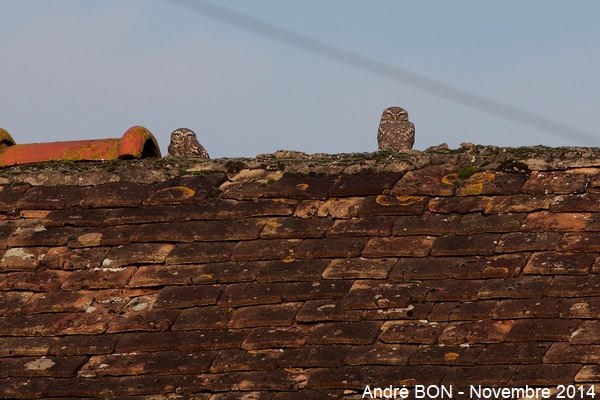
|
Here is where I often observe this pair of Little Owls, on the roof of the old barn. Owls can rotate their head by 270°. Both are looking at me but the one on the right shows its back. |
| [To know more about the Little Owl] [Next picture] [Previous picture] [Top] |
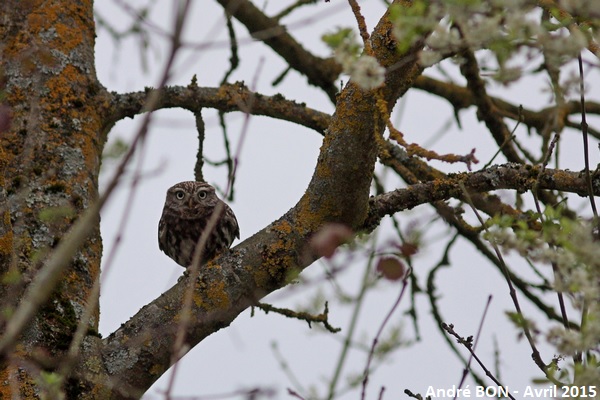
|
Short visit at early Spring, my Little Owl friends are still here! |
| [To know more about the Little Owl] [Next picture] [Previous picture] [Top] |
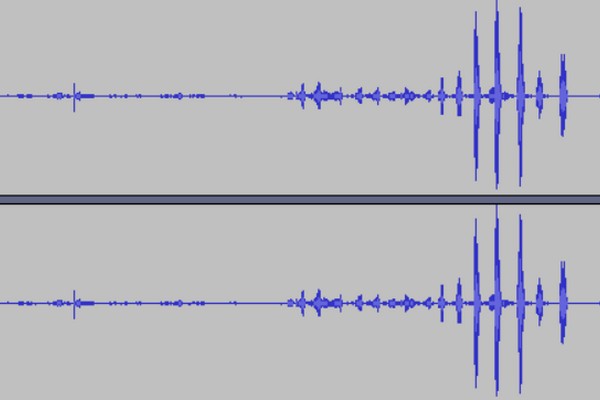
|
I perfectly hid myself under my camouflage hut, a long time before dark, to try to record the Little Owl calls and then the Western Barn Owl calls. I think that the present calls are alarm calls due to my presence. So I went away immediately, with all my stuff, not to disturb any more. Was I sitting close to the nest? |
| [To know more about the Little Owl] [Next picture] [Previous picture] [Top] |
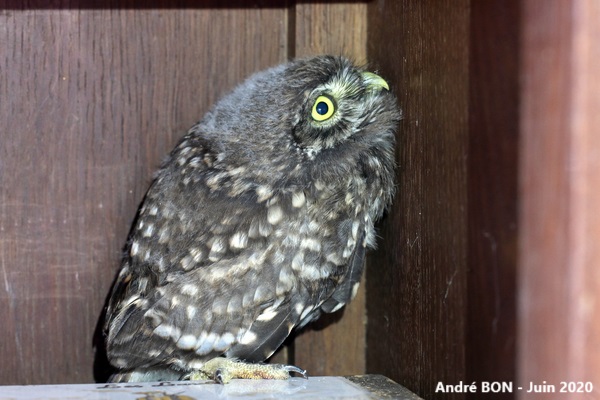
|
The old stable is now used as a storage room for old furniture. What a surprise to find a young Little Owl in one of them. I read that the young leave the nest about a week before they can fly. Is that the case with the one I just saw here? I went back to get the camera to have a souvenir of the scene and left the room quiet for at least two weeks. I later tried to find where the nest could be, but without success. |
| [To know more about the Little Owl] [Next picture] [Previous picture] [Top] |
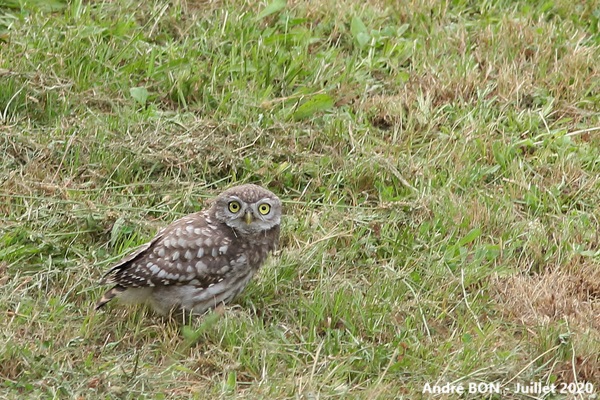
|
I took a quick look at the farmyard from one of the attic windows a little before nightfall. I saw 3 Little Owls at the same time. This one, landed on the ground, and although it had certainly detected my presence, seemed to me to continue hunting insects. |
| [To know more about the Little Owl] [Next picture] [Previous picture] [Top] |
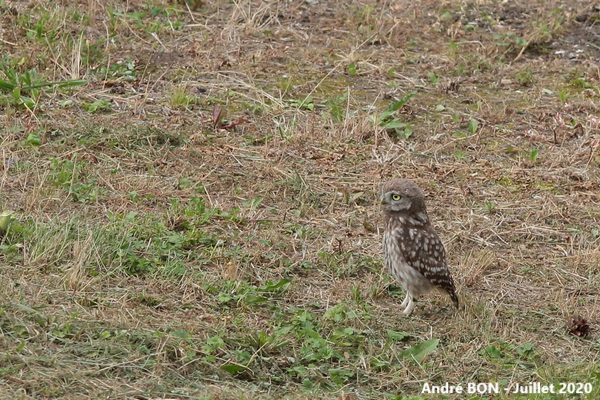
|
On the lookout. |
| [To know more about the Little Owl] [Next picture] [Previous picture] [Top] |
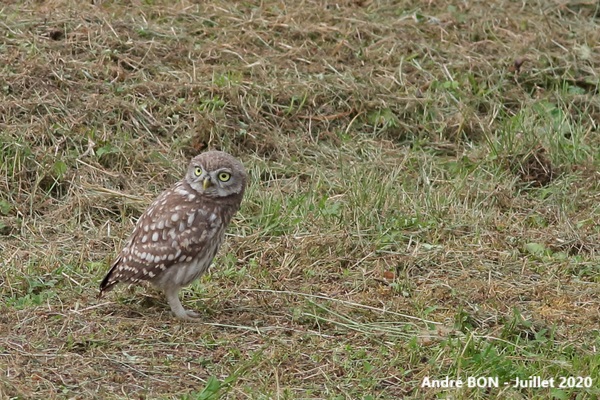
|
The scene lasted quite a long time and I took a lot of pictures. |
| [To know more about the Little Owl] [Next picture] [Previous picture] [Top] |
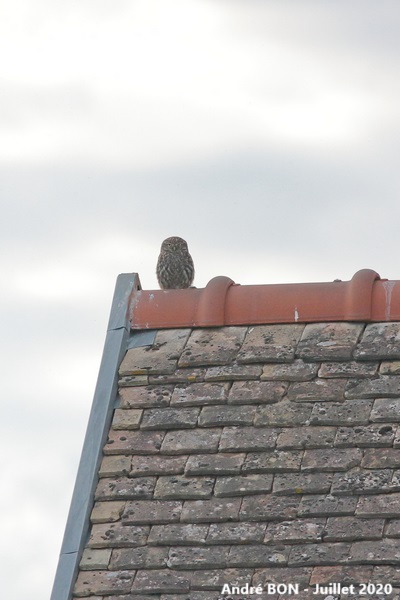
|
Here is another Little Owl observed at the same time as the previous photos. The photos of the third owl, perched on an electric wire, are unfortunately blurry. |
| [To know more about the Little Owl] [Next picture] [Previous picture] [Top] |
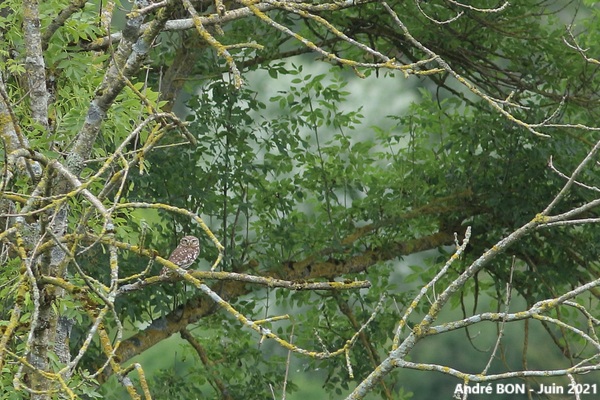
|
It's always a real pleasure to catch a glimpse of these Little Owls in broad daylight. |
| [To know more about the Little Owl] [Next picture] [Previous picture] [Top] |
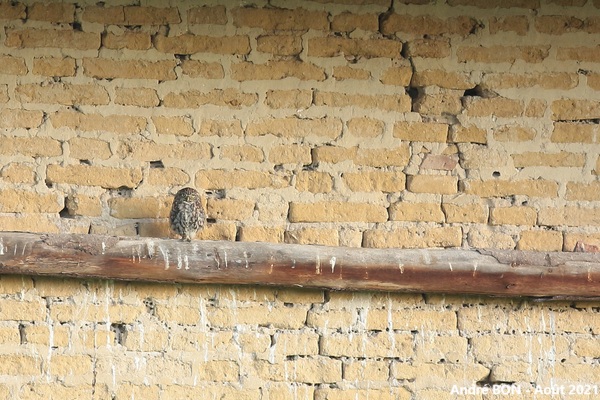
|
Here is the favourite observation spot of this Little Owl. It comes to perch here every evening before dark to watch over everything that is happening in the farmyard. |
| [To know more about the Little Owl] [Next picture] [Previous picture] [Top] |
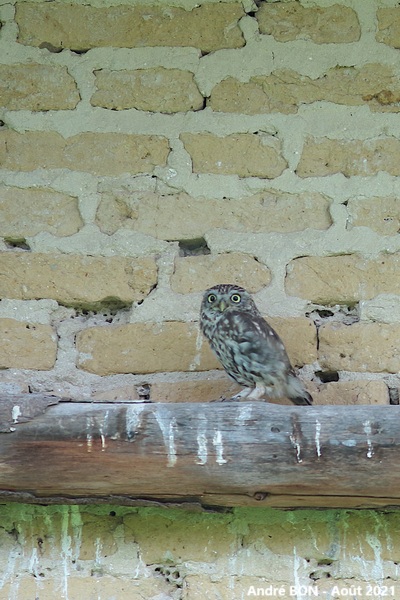
|
The previous photo was taken from the front doorstep of the house. This one was taken a little closer using a small lookout tent. |
| [To know more about the Little Owl] [Next picture] [Previous picture] [Top] |
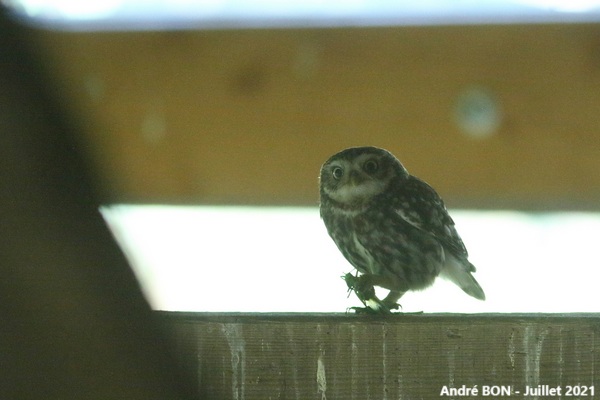
|
I positioned a small hide tent facing the beams where the Little Owls seemed to have their habits. I waited a week without going back, then I positioned myself there in the middle of the afternoon. The wait was a bit long but I had a visit from an Owl who had just captured a Large Green Grasshopper. I saw the meal in real time. |
| [To know more about the Little Owl] [Next picture] [Previous picture] [Top] |

|
I was hoping to have an indication of the location of the nest but all I got was this beautiful curious look. I waited a bit then moved all the equipment to leave the place alone. My next observations were made with the camera trap which is a much more discreet device. |
| [To know more about the Little Owl] [Next picture] [Previous picture] [Top] |

|
Having finally identified a cavity in a wall used as a shelter for nesting, I was able to collect some pellets on the ground nearby. |
| [To know more about the Little Owl] [Previous picture] [Top] |

|
Analysis of this pellet only indicates the presence of insect remains, ground beetles. |